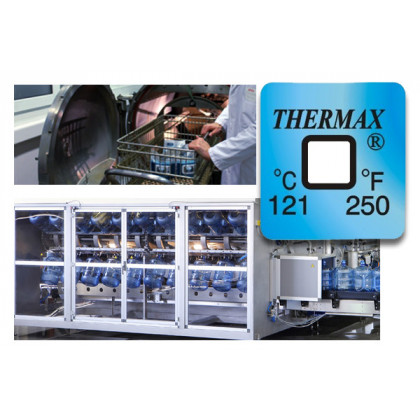The sterilization of plastic containers is a simple process. Still, it must always be done carefully to achieve the best result. One of the most important factors is to control the temperature during the process. As an accessory to the autoclave’s indicator, the temperature strips are an effective method of ensuring that sterilization has been carried out correctly. Below, we review the essential characteristics to achieve effective sterilization.
Why is it essential to sterilize plastic containers?
The sterilization of plastic containers is essential because their composition and use lead to a direct increase in the contamination through contact with whatever is stored inside. Proper sterilization is always crucial to avoid health problems.
What should be the autoclave's temperature to sterilize a plastic container?
First of all, it should be noted that sterilization could take more or less time, depending on the type of container and its composition. If you are going to use the autoclave, please remember that only containers made of fluoropolymers should be placed inside.
Materials such as polypropylene, polypropylene copolymer, polymethylpentene (PMP), PFA, ETFE or FEP must always be sterilized in the autoclave with the lid closed and unscrewed. The combination of temperature and sterilization time is 121 °C for fifteen minutes. Other compounds like polysulfone and polycarbonate need the same temperature, but for 20 minutes.
Containers made of polystyrene, PVC, LDPE or HDPE cannot be sterilized in an autoclave by any means. In these cases, options such as ethylene oxide or formaldehyde are commonly used.
Why is temperature control so important during sterilization?
It is importantmainly because if the time of exposure to heat is not controlled, the container’s components can contaminate what is inside.
Other alternatives such as detergent or non-abrasive cleaners only manage to remove dirtiness on the outside, but not the dirt that may end up on the inside and alter the container’s resistance and durability.
Using dry heat or microwaves does not produce the expected result, as it is almost impossible to control the precise temperature in each case. Additionally, in the first case, each container needs to be subjected to a temperature of between 150 °C and 170 °C for 60 to 150 minutes in order to achieve the same result as in the autoclave.
As you can see, we believe it makes more sense to use an effective system than to choose alternatives that end up putting health at risk. Moreover, safety in many of them is conspicuous by its absence.
We do recommend checking the correct functioning of the temperature sensor so that the sterilization process is always correct. If you notice any alterations in its readings, you should change it so that the sterilization is much more effective.
An efficient alternative and also an accessory to the device’s thermometer are temperature labels. These indicators are stuck directly onto the container. Therefore, the temperature they measure will be exactly the same as the one received by the plastic container. Because they are irreversible temperature indicators, at the end of the process they will mark the temperature reached. This way, we will be able to check if it has been performed correctly.
Main thermometers to control the temperature in plastic sterilization processes
- TDI disinfection control thermometer
- 1 temperature irreversible thermometer
- 8 level adhesive thermometer
As we have seen, the sterilization of plastic containers must meet a series of specific conditions if we want to achieve the desired result. The autoclave is always the most effective option since it completely gets rid of any type of residue or contamination. By using it correctly, you will prevent the problems we have described.

